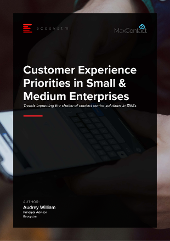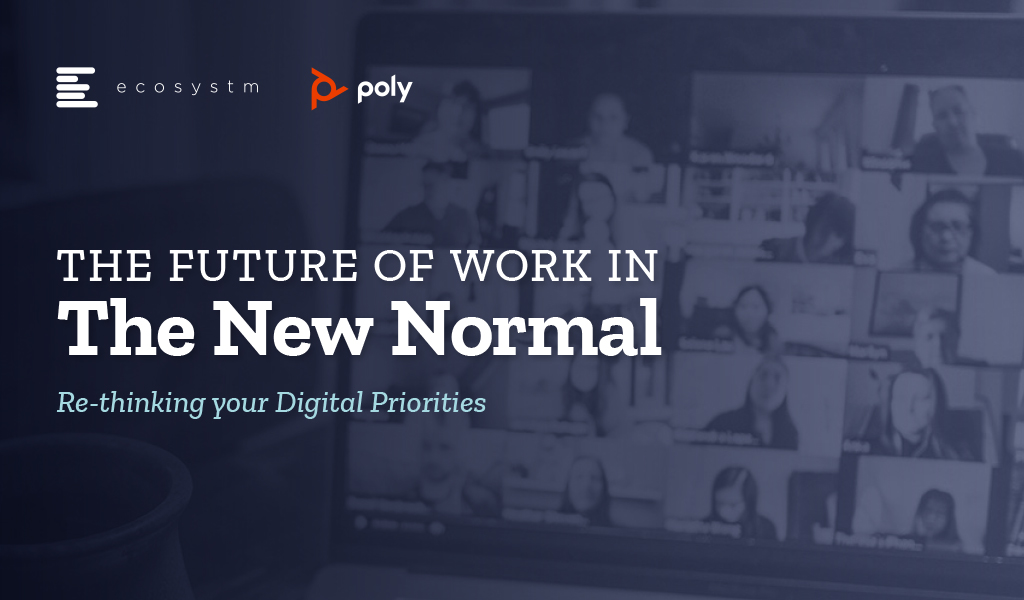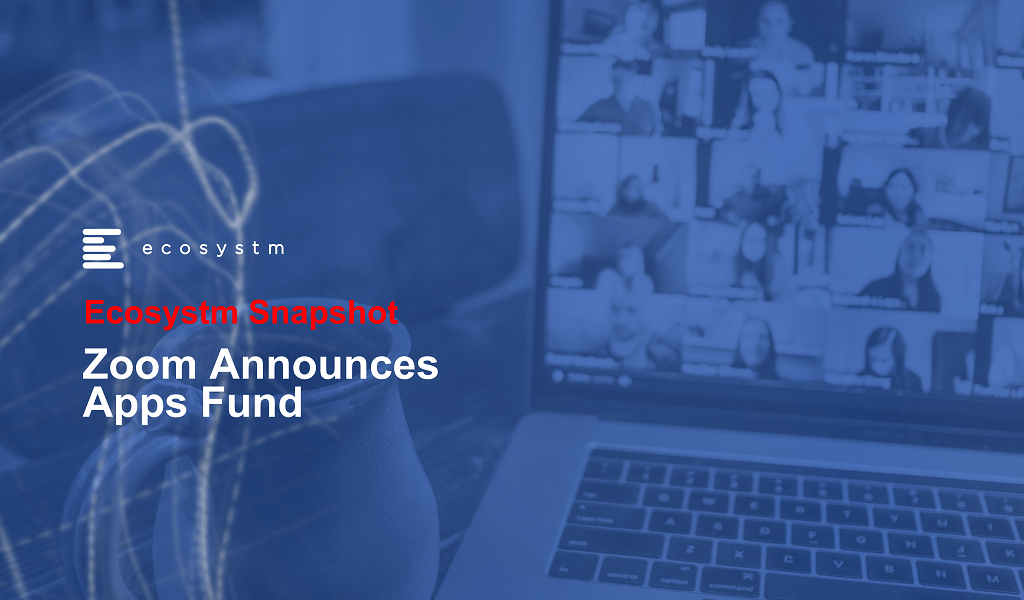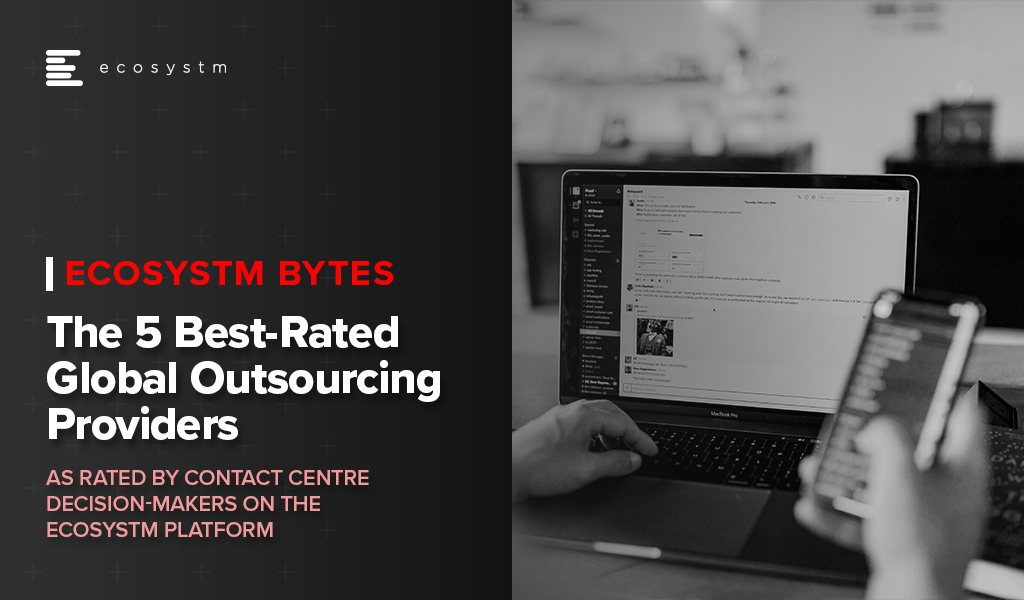Customer experience (CX) is a key business priority for all organisations – irrespective of the organisation size.
Many of the contact centre solutions in the market can be complex and expensive and may not be suitable for a family-owned business or for a business requiring less than 30 agents. What these businesses look for in a solution include: inbound, outbound, call recording, workforce optimisation and basic analytics capabilities. SMEs tend to use contact centre solutions that come with telecom services and have a one-off implementation fee. The overall cost of the solution – including agent licenses and other associated costs such as training – has to be affordable for the SMEs.
This whitepaper provides CX decision makers in Australia’s SMEs with global best practices, to help them understand the priorities of SMEs in running their day-to-day contact centre operations, including case studies. The data mentioned in the paper is from the global Ecosystm CX Study that is live and ongoing on the Ecosystm platform.
Click below to download

(Clicking on this link will take you to MaxContact website where you can download the document )

It is crucial that businesses engage with customers across multiple digital channels and move from being ‘’reactive’’ to ‘’proactive”. To deliver that proactive customer experience (CX), contact centres need to have the ability to predict the customer’s next move and/or send preemptive notifications before problems occur. When you start doing that, you are getting ahead in understanding how to deepen customer engagement.
Ecosystm research finds that 56% of organisations globally consider driving an omnichannel experience a key business priority. The need to repeat personal details and queries each time the customer is on a new channel continues to drive poor CX. Resolving the omnichannel dilemma is an arduous task. It requires a complete overhaul in bringing all channels together.
This whitepaper written by Ecosystm in partnership with Local Measure, discusses the multiple challenges that are hindering companies from delivering on their omnichannel vision and talks about the steps organisations should take to modernise their contact centres.
Find out why not integrating your customer channels is costing your contact centre.
Click below to download the Whitepaper

(Clicking on this link will take you to Local Measure website where you can download the Whitepaper )

Contact centres are under pressure to not only grow revenue but to help drive great CX. However, they continue to struggle to achieve this – they are often unable to identify the process gaps and make the required systemic improvements that can best impact the customer journey.
Discover some of the prominent things in this eBook:
- Key trends that will shape the contact centre industry in 2021.
- How to leverage people processes and technology
- How to achieve better customer experience at scale
eBook – Driving Contact Centre Transformation in 2021

(Clicking on this link will take you to Nexon website where you can download the eBook)

As organisations look to empower consumers with alternative channels of communication and engagement, there will be a greater adoption of Conversational AI. The biggest challenge lies in getting the deployment right from the start. There are many vendors that are promoting their offerings around Conversational AI, and some enterprises that have rushed to invest have been disappointed with the outcome – no improvement in CX but at a higher cost. Organisations need to evaluate the entire design framework, plan where AI fits into the enterprise’s overall CX vision and understand what constitutes Conversational AI.
This whitepaper outlines the definition of Conversational AI and what tech buyers need to consider before embarking on a Conversational AI deployment. The data used in this paper is from the global Ecosystm CX and AI studies, that are live and can be accessed on the Ecosystm platform.
Click Below to Download the Whitepaper

(Clicking on this link will take you to Nuance website where you can download the Whitepaper)

COVID-19 has disrupted the workplace, forcing organisations to accommodate a large remote workforce within a short period of time. IT decision-makers have had to very quickly re-think their strategies and realign investments to ensure communication and collaboration, against this backdrop.
This Ecosystm whitepaper outlines the Future of Work in the New Normal.
Key findings include:
- What the new normal looks like in the Asia Pacific region
- Areas where IT was unprepared going into the pandemic
- Measures taken by IT to combat the crisis
- Measures taken by businesses to facilitate remote working
- What technology investments are now a top priority and will continue after Covid-19
- What should businesses in Asia be thinking about in the new normal
Click below to download the Whitepaper

(Clicking on this link will take you to Poly website where you can download the whitepaper)

Ecosystm pens a detailed case study examining how Norske Skog Australasia (NSA) successfully transformed its operations by adopting Ramco ERP solution.
The case study outlines how within eight months, Norske Skog Australasia (NSA), a world-leading producer of newsprint and magazine paper, replaced its legacy systems with an intelligent ERP that helped the organization achieve tangible business benefits. This includes automation of manual processes, faster invoice processing, cost savings among many other benefits.
Listen to Ecosystm Principal Advisor, Tim Sheedy, talks about the ERP transformation
Case Study: Norske Skog Australasia (NSA) RAMCO ERP

(Clicking on this link will take you to the Norske Skog Australasia website where you can download the case study)

Last week Zoom announced a USD 100 million Zoom Apps Fund to promote the development of Zoom’s ecosystem of Zoom applications, integrations, video, developer tools, and hardware.
As part of Zoom Apps Fund, the company will invest in a portfolio of companies that are promoting and innovating on Zoom’s video conferencing platform. The portfolio companies will receive initial investments between USD 250,000 and USD 2.5 million to build solutions. To support the practice, Zoom is providing its tools and expertise to various start-ups, entrepreneurs, and industry players to build applications and integrate Zoom’s functionality and native interface in their products.
In March, Zoom introduced an SDK designed to help programmers embed Zoom functionality inside their applications. Zoom SDK is a component of Zoom Developer platform which includes SDKs, APIs, webhooks, chatbots, and distribution for applications and integration. Last year Zoom launched Zoom Apps and Zoom Marketplace at its Zoomtopia virtual conference to bring applications and productivity into the Zoom experience.
Zoom is not alone in evolving their Unified communications as a service (UCaaS) capabilities and market. Tencent rolled out their video conferencing solution for the global market, Facebook expanded their offerings in videoconferencing applications through the integration of new features, Google announced a series of upgrades and innovations to better support the flexibility needs of frontline and remote workers in Google Workspaces, and Microsoft introduced Viva that aims to bring together communications, knowledge, learning, resources, and insights together.

“Ecosystm research shows that 50% of organisations will continue to increase use of collaboration platforms and tools in 2021. However, if videoconferencing remains just a tool to log in to for meetings without purpose-built workflows and functionality that suit worker profiles, then it will start losing its attractiveness. Vendors need to work on user interface, UX, the lighting, security, audio quality and many other aspects that draws users to the platform.
The big question is what next for videoconferencing vendors? How can engineering teams innovate to build the capabilities organisations want when they use drawing tools, share images, have chats and discussions within collaboration platforms? How do you make the experience real so employees can “live and breathe” in the environment?
Zoom investing in understanding what apps and workflows are suited for a particular vertical or business is fundamental to the future of video and collaboration and will be a big game changer.”

“Zoom is continuing to expand the markets in which they operate and investing in start-ups increases their opportunities to grow as a platform. Their App Marketplace already offers a rich source of innovations, with Zoom themselves appearing to develop integration with market leaders such as Salesforce and HubSpot in the CRM category. This has led to Zoom integrations in close to 80 CRM products – including integrations developed in-house by Salesforce and HubSpot to supplement Zoom capabilities.
They are promoting an open web and audio-conferencing platform that does not limit users to the walled-garden approach of competitors such as Microsoft Teams.
Zoom’s strategy creates the opportunity for CIOs to access a widely used, rich functionality, digital collaboration channel – one they can integrate seamlessly into their existing digital channels knowing that their customers are likely to be highly familiar with the user experience.”
Get more insights on the impact of the COVID-19 pandemic and technology areas that will see innovations, as organisations get into the recovery phase.

In this Ecosystm Bytes, we bring to you the best rated global outsourcing providers based on the feedback from our platform users. Organisations are aware of the growing need to drive omnichannel experience and exceptional customer experience. In today’s competitive world that exceptional service that you provide might be the only key market differentiator.
If you are looking to outsource your business processes or your customer engagement, you should evaluate those organisations that are considered best-in-class and have expertise in your industry.
View the latest Ecosystm Bytes below, and reach out to our experts if you have questions.
2021 will see global outsourcing providers, dealing with new ways of working by employing various outsourcing capabilities. See how you can empower your teams and agents to deliver an exceptional experience in 2021 in our Ecosystm Predicts: The Top 5 Contact Centre Trends for 2021 report.

Last week Microsoft announced the acquisition of Nuance for an estimated USD 19.7 billion. This is Microsoft’s second largest acquisition ever, after they acquired LinkedIn in 2016. Nuance is an established name in the Healthcare industry and is said to have a presence in 10,000 healthcare organisations globally. Apart from Healthcare, Nuance has strong capabilities in Conversational AI and speech solutions to support other industries. This acquisition is in line with Microsoft’s go-to-market roadmap and strategies.
Microsoft’s Healthcare Focus
Microsoft announced their Healthcare Cloud last year and this acquisition will bolster their Healthcare offerings and market presence. Nuance’s product portfolio includes clinical speech recognition SaaS offerings – Dragon Ambient eXperience, Dragon Medical One and PowerScribe One for radiology reporting – on Microsoft Azure. The acquisition builds on already existing integrations and partnerships that were in place over the years.

“Microsoft Cloud for Healthcare offers its solution capabilities to healthcare providers using a ‘modular’ approach. Given how diverse healthcare providers are in their technology maturity and appetite for change, the more diverse the ‘modules’, the greater the opportunities for Microsoft. This partnership with Nuance also brings to the table established relationships with EHR vendors, which will be useful for Microsoft globally.
The Healthcare industry continues to struggle as the world negotiates the challenges of mass vaccination. But on the upside, the ongoing Healthcare crisis has given remote care a much-needed shot in the arm. Clinicians today will be more open to documentation and transcription services for process automation and compliance. The acquisition of Nuance’s Healthcare capabilities will definitely boost Microsoft’s market presence in provider organisations.
However, Healthcare is not the only industry that Microsoft and Nuance are focused on. The Microsoft Cloud for Retail that was launched earlier this year aims to offer integrated and intelligent capabilities to retailers and brands to improve their end-to-end customer journey. Nuance has omnichannel customer engagement solutions that can be leveraged in Retail and other industries. As Microsoft continues to verticalise their offerings, they will consider more acquisitions that will complement their value proposition.“
Microsoft’s Focus on Conversational AI
Microsoft already has several speech recognition offerings, speech to text services, and chatbots; and they continue to invest in the Conversational AI space. They have created an open-source template for creating virtual assistants to help Bot Framework developers. In February, Microsoft announced their industry specific cloud offerings for Financial services, Manufacturing, and Non-Profit, and also introduced a series of AI and natural language features in Microsoft Outlook, Microsoft Teams, Microsoft Office Lens and Microsoft Office mobile to deliver interactive, voice forward assistive experiences.

“There is no slowing down in this space and the acquisition clearly demonstrates the vision that Microsoft is building with Nuance – a vendor that has made speech recognition, text to speech, conversational AI the foundation of the company. This is a brilliant move by Microsoft in the Conversational AI space and a win-win for both companies.
This move could also mark further inroads for Microsoft into the contact centre space. With Teams now being integrated into contact centre technologies, working with large customers using speech and conversational AI, Dynamics 365 could herald the start of more acquisitions for Microsoft to bolster a wider customer engagement vision.
The Conversational AI war is heating up and various other cloud vendors such as Google and AWS are starting to get aggressive and have made investments in recent years to enhance their Conversational AI capabilities. Google Dialogflow has been seeing rapid uptake and they now have deep partnerships with Genesys, Avaya, Cisco and other contact centre players. Microsoft coming into the game and acquiring a company with years of history and IP in the speech space, demonstrates how the cloud battle and the war between Google, Microsoft and AWS is heating up in the Conversational AI. All of a sudden you have Microsoft as a powerhouse in this game.”




















